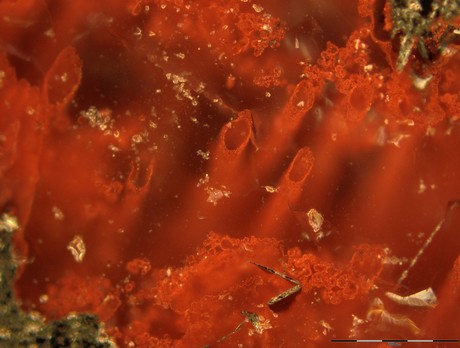World's oldest fossils uncovered

An international research team has discovered the remains of microorganisms at least 3.77 billion years old, making them the oldest fossils ever found.
In a study led by University College London (UCL), researchers discovered tiny filaments and tubes, formed by bacteria that lived on iron, encased in quartz layers in the Nuvvuagittuq Supracrustal Belt (NSB), Quebec. The NSB contains some of the oldest sedimentary rocks known on Earth, which likely formed part of an iron-rich deep-sea hydrothermal vent system that provided a habitat for Earth’s first life forms between 3.77 and 4.3 billion years ago.
Collaborating with researchers from the Geological Survey of Norway, the US Geological Survey, the University of Western Australia (UWA), the University of Ottawa and the University of Leeds, the UCL team sought to determine whether the newly discovered fossils definitely had biological origins. This was in part due to a controversial microfossil discovery that took place in Western Australia some years ago, which some scientists suspected to be non-biological in nature.
The research team systematically looked at the ways the tubes and filaments, made of haematite — a form of iron oxide or ‘rust’ — could have been made through non-biological methods such as temperature and pressure changes in the rock during burial of the sediments. Writing in the journal Nature, they stated that all such possibilities were unlikely.

Furthermore, the haematite structures have the same characteristic branching of iron-oxidising bacteria found near other hydrothermal vents and were found alongside graphite and minerals like apatite and carbonate, which are found in biological matter including bones and teeth and are frequently associated with fossils. The researchers also found that the mineralised fossils are associated with spheroidal structures that usually contain fossils in younger rocks, suggesting that the haematite most likely formed when bacteria that oxidised iron for energy were fossilised in the rock.
“We found the filaments and tubes inside centimetre-sized structures called concretions or nodules, as well as other tiny spheroidal structures, called rosettes and granules, all of which we think are the products of putrefaction,” said lead author Dr Dominic Papineau. “They are mineralogically identical to those in younger rocks from Norway, the Great Lakes area of North America and Western Australia.
“The structures are composed of the minerals expected to form from putrefaction and have been well documented throughout the geological record, from the beginning until today. The fact we unearthed them from one of the oldest known rock formations suggests we’ve found direct evidence of one of Earth’s oldest life forms.”
So how were these life forms created in the first place? According to first author Matthew Dodd, “Our discovery supports the idea that life emerged from hot, sea-floor vents shortly after planet Earth formed. This speedy appearance of life on Earth fits with other evidence of recently discovered 3700-million-year-old sedimentary mounds that were shaped by microorganisms.”
Not only will the discovery help researchers piece together the history of life on planet Earth, said Dr Papineau — they may also help identify traces of life elsewhere in the universe.
“These discoveries demonstrate life developed on Earth at a time when Mars and Earth had liquid water at their surfaces, posing exciting questions for extraterrestrial life,” said Dodd. “Therefore, we expect to find evidence for past life on Mars 4000 million years ago, or if not, Earth may have been a special exception.”
Solar-powered reactor uses CO2 to make sustainable fuel
Researchers have developed a reactor that pulls carbon dioxide directly from the air and converts...
Scientists simulate the effects of an asteroid collision
How would our planet physically react to a future asteroid strike? Researchers simulated an...
2024 was warmest year on record, 1.55°C above pre-industrial level
The World Meteorological Organization says that 2024 was the warmest year on record, according to...




